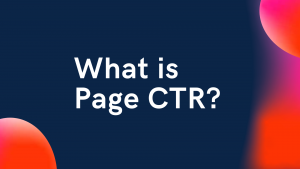The best practices for analyzing the Top Sales Funnel in digital marketing encompass various strategies and tactics to guide potential customers through the buying process and maximize conversions. These practices are essential for creating an effective strategy for analyzing the top sales funnel that drives business revenue and fosters long-term customer relationships.
The best way to analyze these practices is to study them using the best sales funnel examples from specific brands and companies. Think about your online business. You want more potential customers and target prospects to visit your website organically, learn more about you, check out the prices, and then convert — complete a purchase, fill out forms, or even sign up for newsletters.
Be that as it may, this is where the funnel comes in. Usually, it is an analytical method that shows you meaningful data regarding how visitors move through your website. Still, it defines the various stages they might go through before converting or leaving. This top-down approach is comprehensive at the top and narrow at the bottom, giving the concept the functionality of an actual funnel.
It’s worth mentioning that the marketing funnel is a critical piece of the business reputation management and organic growth process. Eventually, it outlines the most straightforward journey customers might take in their purchase paths. Ultimately, the marketing funnel is a helpful framework for connecting and engaging with customers along their journey. Let’s take a closer look.
Exploring Simple Steps For Analyzing Top Sales Funnel With Example Practices
The Marketing Funnels concept existed long before even computers. This theory was first put forward in 1898 by an American Advertising Advocate, Elias St. Elmo Lewis, a marketing guru of the time. The funnel model eventually became associated with the concept of AIDA—Awareness, Interest, Decision, and Action—in 1924 by William W. Townsend in his book Bond Salesmanship.
Analyzing Top Sales Funnel can help webmasters and marketers understand their marketing efforts, their importance in their business environment, and how they can optimize their efforts to increase turnover results. Furthermore, with Freshmarketer, you can track how visitors move through your website, identify where they drop off, and get insights on different conversion paths.
1. Understand Your Audience
A thorough understanding of your target market is the cornerstone of any successful sales funnel. To determine your customers’ needs, preferences, and pain points, conduct market research, examine customer data, and develop buyer personas. Adapt your marketing tactics and messaging to your target audience at every moment of the sales funnel.
Example: The core of HubSpot’s inbound marketing strategy is comprehending marketers’ problems and obstacles and offering insightful content to solve them. HubSpot provides a wealth of resources, such as blog posts, webinars, and tools tailored to the particular needs of its target audience.
2. Produce Captivating Content
Content is an effective tool throughout the sales funnel for drawing in, holding the attention of, and converting leads. Create excellent, pertinent content that informs, amuses, or resolves issues for your target audience. Use various media, including podcasts, infographics, videos, and blog posts, to cater to diverse tastes and learning styles.
Example: The clever and humorous content of Dollar Shave Club’s marketing campaigns is well-known for connecting with their target demographic. With millions of views, their viral video “Our Blades Are F***ing Great” clearly explained the value of their subscription service in a novel (and very funny) way.
3. Maximize Your Conversion Rate
Simplify the conversion process by removing obstacles and facilitating prospects’ desired action. Optimize landing pages, forms, and calls to action to encourage conversions. Try experimenting with different headlines, images, and button colors to see what appeals to your audience the most.
Example: Travelers can easily find and book lodging thanks to Airbnb’s user-friendly booking forms, clear call-to-actions, and intuitive navigation on their website. The user satisfaction and high conversion rates of Airbnb can be attributed to their efficient booking process.
4. Personalize The Customer Experience
Ensure your offers and marketing messaging are specific to your target market’s tastes and habits. Deliver tailored content, suggestions, and promotions at every funnel stage using data-driven insights. Relevance, interaction, and conversion rates are all improved by personalization.
Example: In this case, Amazon uses user demographic data, browsing history, and previous purchase data to offer its customers tailored product recommendations. Amazon’s “Recommended for You” and “Customers Who Bought This Item Also Bought” sections are prime examples of successful personalization that boosts sales.
5. Put Marketing Automation To Use
With marketing automation, you can deliver individualized experiences at scale, nurture leads, and expedite repetitive tasks. Send targeted email campaigns, set off automated responses based on user behavior, and monitor customer interactions across various channels with automation tools.
Example: Netflix employs advanced algorithms and machine learning methodologies to provide users with customized content recommendations. Netflix’s homepage features a “Recommended for You” section that suggests movies and TV series based on the individual’s viewing preferences and history.
6. Deliver Outstanding Client Care
Providing excellent customer service is essential to establishing loyalty, generating trust, and encouraging repeat business. Throughout the purchasing process and beyond, provide customers with timely, helpful, and individualized support to handle their questions and concerns.
Example: The customer service staff at Warby Parker is renowned for providing prompt, amiable assistance. Customers can contact the company through various channels, such as phone, email, and live chat, and it aims to offer individualized solutions to meet their needs.
7. Address Your Customer Pain Points
On the one hand, as potential customers continue through the marketing funnel, they seek more specific information when considering buying your product or service. This includes researching why you are better than your competitors. At the same time, during the consideration phase, you provide more detailed information to guide potential customers into the action phase.
On the other hand, providing potential customers with the correct information, such as case studies or webinars, can help build more trust during this phase.
Example: Zapier uses Facebook Ads to retarget users interacting with their website or content. They recognize that users may have visited their website to read their content and watched video testimonials as social proof. In this video, a customer tells her story about how she uses one of Zapier’s features to automate her business, a pain point Zapier was able to address.
8. Put Retention And Loyalty First
The long-term success of any business depends on retaining your current customers as much as it does attracting new ones. Implement strategies to cultivate recurring business, reward customers for their loyalty, and build relationships with them via individualized communications, special offers, and incentive schemes.
Example: Peloton, for instance, uses features like virtual high-fives, live classes, and leaderboards to foster a strong sense of community and user loyalty. These features motivate and encourage engagement. The company also provides incentives and prizes for hitting fitness benchmarks to make its members feel they belong and have accomplished something.
9. Optimize Your Digital Marketing Funnel
Remember, a Digital Marketing Funnel describes your customer’s journey with you. From the initial stages, when someone learns about your business, to the purchasing stage, an effective digital marketing funnel helps map routes to conversion and beyond. With careful analysis, a marketing funnel lets you know what your company must do to influence consumers at certain stages.
In other words, it’s worth noting that your business can achieve fantastic results by correctly evaluating your top sales funnel and working on them. For instance, it can help you drive outstanding sales, loyalty, and robust brand awareness. Plan for your blog posts and tag them by funnel stages to find out where your digital marketing funnel is working and where it needs more attention.
Example: According to sproutsocial, their digital marketing funnel works as a unified whole. When every section works towards specific goals, friction in the journey is reduced, creating a customer journey that continues to build trust with your audience and raise awareness of your brand. Moreover, SproutSocial can help you make your marketing efforts more efficient.
10. Monitor And Evaluate Results
Monitor and evaluate your sales funnel’s performance to pinpoint areas for optimization and improvement. Track essential metrics like conversion rates, traffic sources, and customer engagement with analytics tools. A/B tests various approaches and components to find out what yields the best outcomes.
Example: For instance, Shopify offers businesses powerful analytics tools to monitor traffic, sales, and user behavior on their e-commerce websites. Merchants can use these insights to spot trends, maximize their marketing budgets, and make data-driven choices that will help them expand their companies.
A Quick Summary:
The basics of the marketing funnel have stayed the same since the 1900s. However, no single model is universally accepted by all companies. Some prefer to keep their model simple, using the “TOFU-MOFU-BOFU” strategy, which refers to the top sales funnel, middle of the funnel, and bottom of the funnel as distinct elements. Others believe in adding “loyalty” and “advocacy” stages.
Adding these stages to their top sales funnel helps improve their marketing strategy. The marketing funnel works as a unified whole. This means that every section needs to work perfectly for the journey to be successful. Many things reduce friction in their marketing funnel.
For Instance:
- Awareness: Branded content strategies appeal to audiences and make them receptive to future interactions.
- Consideration: Brand advocates and social proof assist customers when comparing you against competitors.
- Conversion: A simple purchasing process reduces the risk of buying.
- Loyalty: A loyalty program with regular discounts, email interactions, and social media maintains customers.
- Advocacy: Receptive individuals in your loyalty program support your future marketing funnels.
In conclusion, by adhering to these best practices and examples, companies can develop successful marketing sales funnels to draw in a lead, hold their attention, and turn them into a devoted customer.
Companies can drive sustainable growth and achieve long-term success in today’s competitive marketplace by understanding their audience, producing compelling content, optimizing for conversion, personalizing the customer experience, implementing marketing automation, offering first-rate customer service, monitoring performance, and emphasizing retention and loyalty.





